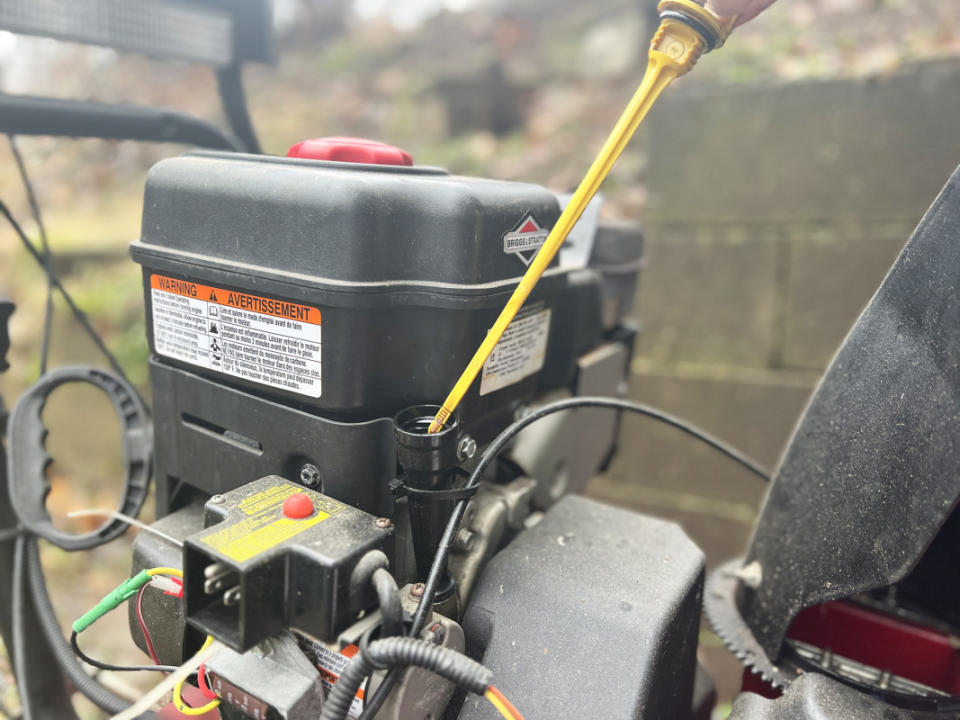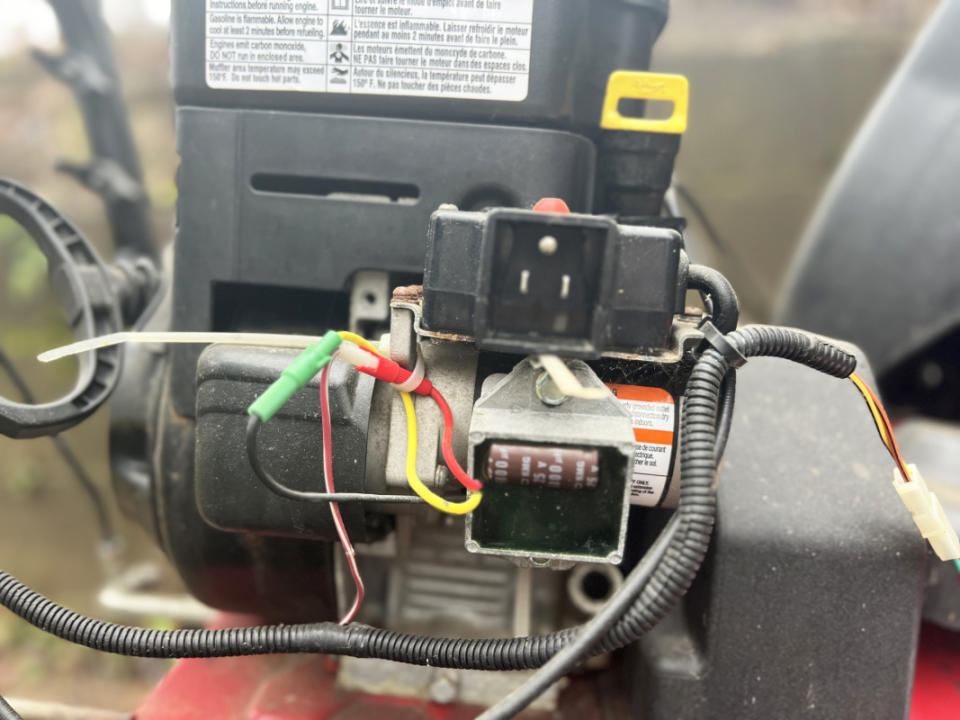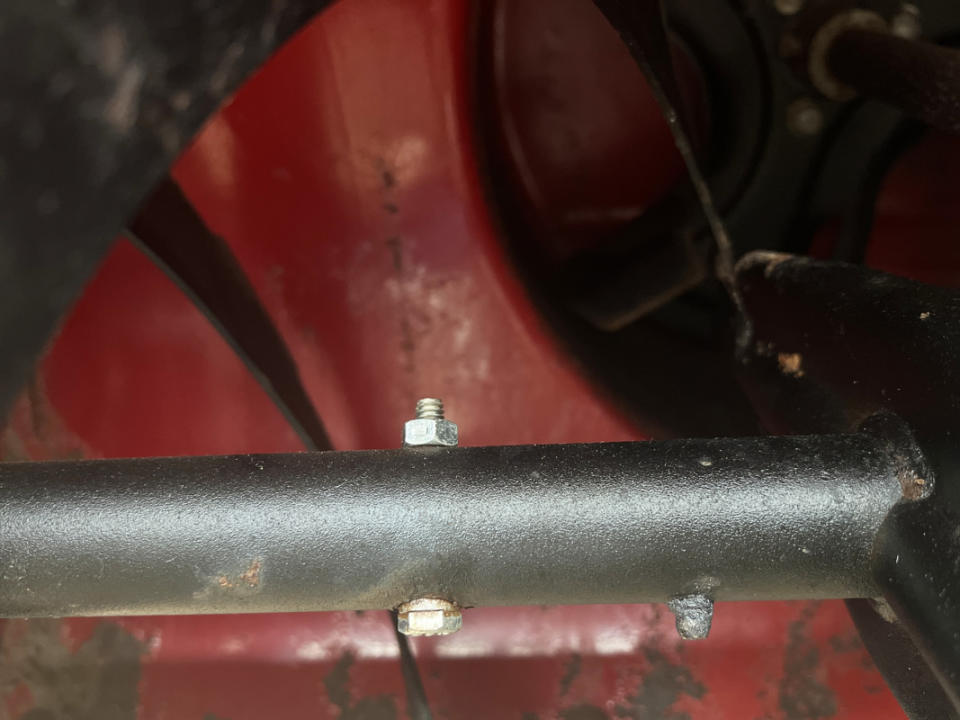How to Store Your Snow Blower in the Off-Season
Now that the likelihood of winter storms has passed, you're probably ready to move the snow blower into its seasonal storage. Before you park it in your shed or bury it in the back corner of your garage, take time to maintain the machine so it stays in great condition between now and next winter. "Winterizing" (Summerizing?) your snow blower after the snow season does more than help prevent corrosion. Just like winterizing a lawnmower, taking care of the fuel system and lubricating it will help prevent engine damage and ensure smooth operation when you need it again.
1. Clean and Inspect the Snow Blower
Clean debris and dirt from the surfaces. If your machine has had exposure to salt, it's not a bad idea to use a wet cloth to wipe away salt stains, or rinse residue build-up off metal surfaces with a light spray of the hose.
Inspect the snow blower carefully for any signs of damage or wear. Check for loose bolts, nuts, or screws that may need tightening. Check belts for cracks and frays, and inspect for loosening cables. Look for cracks, dents, or signs of corrosion that could indicate potential issues. Pay special attention to the auger paddles, auger housing, chute, shear pins, and other areas that may experience excessive wear. It's always an inconvenient time to plan for major repairs, but trust me: if you need to fix something, do it now. That way, your equipment will be ready for the next cold weather season.
2. Drain the Fuel System (Gas Models)
This doesn't apply to electric snow blowers, but if you have a gas snow blower, pay attention. Most manufacturers recommend that you leave the fuel tank empty; all you'll need to do is fill it with fresh gasoline in the spring.
Start by turning off the fuel valve or disconnecting the fuel line.
Run the engine dry. Let it go until it stalls to ensure all fuel is consumed from the carburetor.
Remove the gas tank and empty any remaining fuel into an approved container. You'll need to dispose of the old fuel properly according to local regulations.
Alternatively, if your manufacturer recommends using fuel stabilizer, add it to the fuel tank and run the engine for a few minutes to circulate the stabilizer through the system.
3. Change the Engine Oil (Gas Models)
Again, this snow blower maintenance only applies to gas snowblowers! If you've used your machine all season, it's best to replace the snow blower engine oil before you put it away.
Warm up the engine by running it for a few minutes to ensure the oil is warm and flows easily.
Locate the oil drain plug and position a drain pan underneath.
Remove the drain plug and drain the oil completely into the pan.
Replace the drain plug and refill the engine with fresh oil according to the manufacturer's recommendations.
Run the engine for a few minutes to circulate the new oil throughout the system.

Emily Fazio

Emily Fazio
4. Remove the Spark Plug
Disconnect the spark plug ignition wire to prevent accidental starts. Use a spark plug wrench to remove the spark plug from the engine.
Inspect the spark plug for signs of wear or damage. Replace it if necessary.
Apply a small amount of oil or lubricant to the spark plug hole to prevent corrosion.
5. Lubricate Moving Parts
Before lubricating, clean moving parts to remove debris and old lubricant residue.
Apply lubricant to moving parts such as the auger, chute, and control levers to prevent rust and corrosion. Use grease, oil, or silicone-based products as advised by the owner's manual to prevent rust and ensure smooth operation.
Apply the lubricant generously, covering all moving surfaces thoroughly. Focus on crucial metal components like the auger rotor blades, auger scraper, chute, friction discs, control levers, and pivot points. Apply lubricant to auger shafts, bearings, and chute assembly to reduce wear and corrosion risk.
Finally, lubricate control levers, cables, and linkage points for smooth operation. Regular maintenance serves as a rust preventative, and also prevents wear, so you can continue to maintain speed, direction, and chute adjustment.

Emily Fazio
6. Wrap With a Snow Blower Cover and Store Properly
Choose a clean, dry location for off-season storage.
Protect the snow blower in the storage unit using a tarp, drop cloth, or frame cover to prevent dust and debris from accumulating on the surfaces.
Proper storage involves leaving the snow blower in an upright position to prevent oil leaks and damage to the engine and components.
Store any accessories or attachments, including the safety ignition key, in a secure location to prevent loss or damage.

